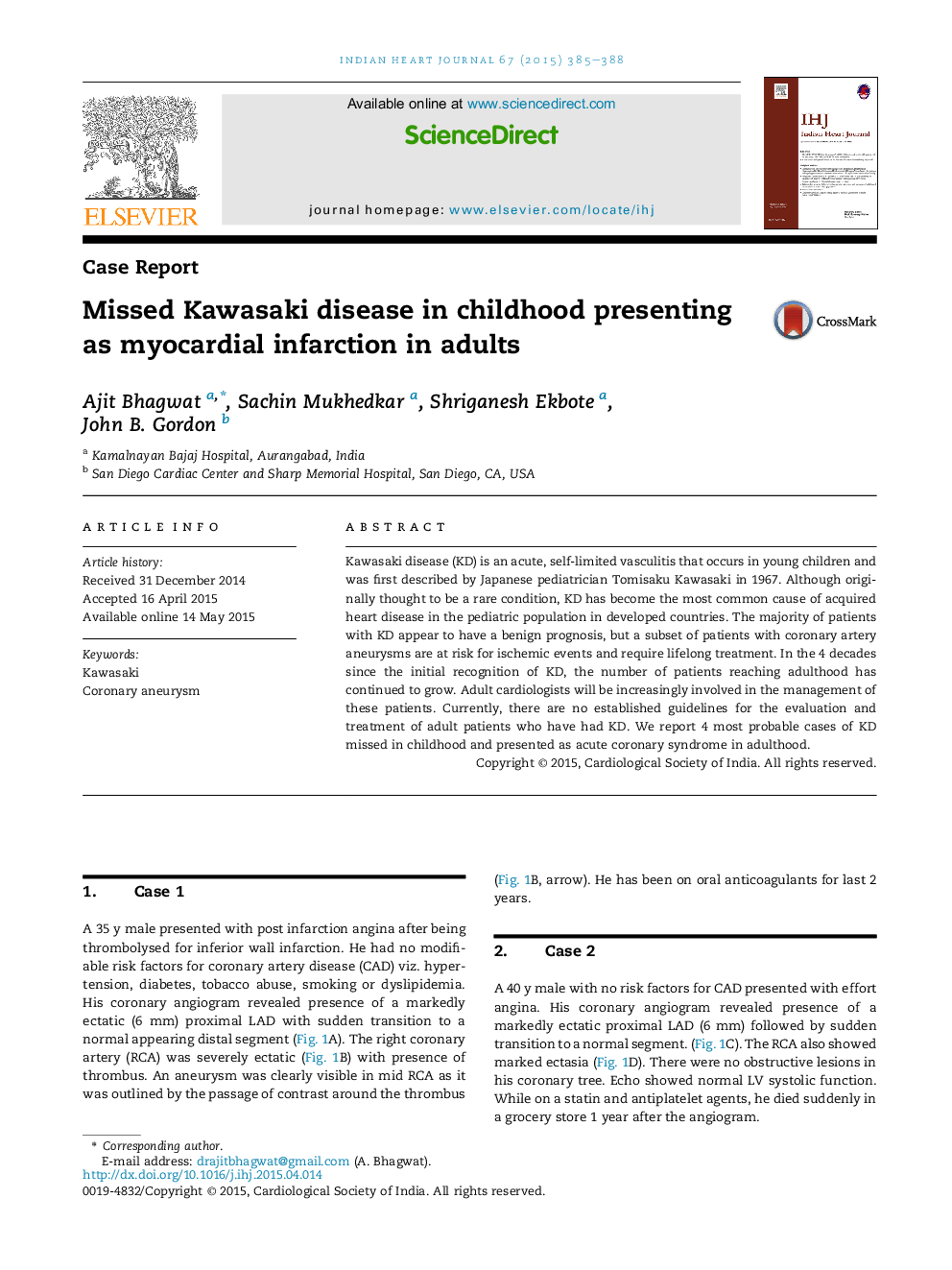| Article ID | Journal | Published Year | Pages | File Type |
|---|---|---|---|---|
| 2927441 | Indian Heart Journal | 2015 | 4 Pages |
Kawasaki disease (KD) is an acute, self-limited vasculitis that occurs in young children and was first described by Japanese pediatrician Tomisaku Kawasaki in 1967. Although originally thought to be a rare condition, KD has become the most common cause of acquired heart disease in the pediatric population in developed countries. The majority of patients with KD appear to have a benign prognosis, but a subset of patients with coronary artery aneurysms are at risk for ischemic events and require lifelong treatment. In the 4 decades since the initial recognition of KD, the number of patients reaching adulthood has continued to grow. Adult cardiologists will be increasingly involved in the management of these patients. Currently, there are no established guidelines for the evaluation and treatment of adult patients who have had KD. We report 4 most probable cases of KD missed in childhood and presented as acute coronary syndrome in adulthood.
